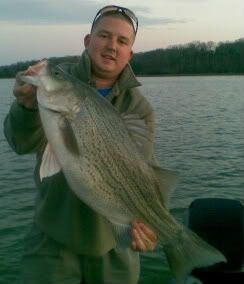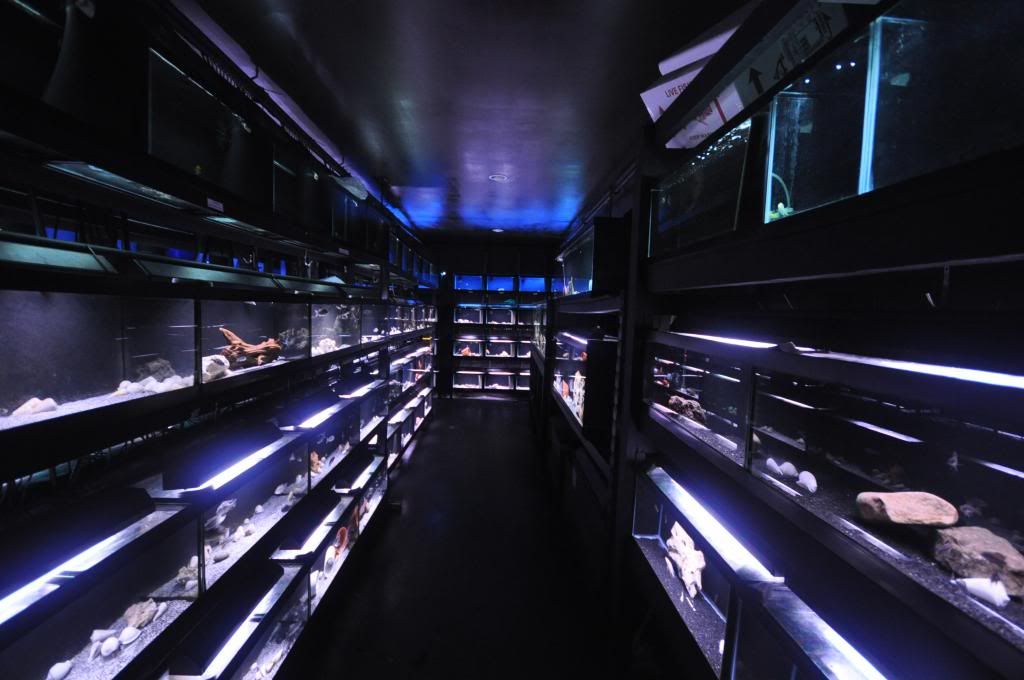will
FORUM BEGINNER
Posts: 28
|
Post by will on Feb 7, 2011 12:42:28 GMT -6
Hi all, it has been quite a while since I have been on here but I have found myself in need of an experienced opinion. I am about to be setting up several 10g tanks to raise the fry that my two different peacock breeders have been producing. I have just been letting them live or die in their community tanks but I have finally separated everyone and now can have confidence that there will be no cross breeding. I am going to be acquiring some tanks that have been running for about 6 months. They were cycled without fish and all contain some sort of beginner stage live plant in them. I do not have any live plants in my current cichlid tanks. Do you see plants being a problem, as only fry will be in these tanks. More importantly, do you see me having any problems with a new cycle taking place since there has not been much waste introduced in them. There has been a few snails living in them but that is all. Would you recommend any certain methods for preparing these tanks, and would it be necessary to start with a few barbs per tank just to make sure a cycle doesn't occur. Any methods encouraged? Salt, more stress coat than normal, etc.? In the beginning it won't be as vital as far as maintaining the fry because i do not have that many. But once i get it going and start adding fry i will obviously want to protect my investment. Thanks for any input. And oh by the way, I need some German Red females Jon.
|
|
will
FORUM BEGINNER
Posts: 28
|
Post by will on Feb 7, 2011 12:43:32 GMT -6
And I apologize if I didn't put this in the right spot.
|
|
angel
FORUM BEGINNER
My Husband's A Birdbrain
Posts: 40
|
Post by angel on Feb 7, 2011 14:51:52 GMT -6
Honestly, and maybe no one else will agree with this but it has worked for me, I've never worried about a cycled tank when doing fry tanks. They don't produce much waste to start out with other than the fish food they don't eat which I would vaccuum out regularly anyway so everything stayed clean. Maintenance is higher on fry tanks because they're babies so there's not much chance if you're changing some of the water every day and they're really small that they're going to produce much ammonia. A sponge filter, meanwhile, can begin growing beneficial things in it while not allowing them to get in and get killed. I do like to use a sponge from an established tank and really that, when possible, is instantly cycling your tank anyway. Do you have some you can swap around?
Be mindful of temperature changes though. Have the tank the same temp as the tank they were coming from. You might benefit by using some water from that tank in the fry tanks. Just my opinion.
|
|
|
|
Post by jon carman on Feb 7, 2011 21:51:39 GMT -6
It wouldn't hurt to use water from the parents tank, and bio from the parents filters. Fry won't mess with live plants other than little nips. I will be getting in some full grown german red males and females in a couple weeks. Don't know price yet, but I would say 4" females would be about $20-$25. I might be getting charged more if they are proven breeders. I kind of hate that because with peacocks and haps, most will breed.
|
|
|
|
Post by Willl on Feb 8, 2011 10:50:05 GMT -6
This setup has a canister filter running multiple tanks. Most of my other tanks have filter cartridge style filters. Surely there is a way to get some of the bio into this canister filter. I already planned on putting a small amount of the rock and gravel from my main tanks into these seperate fry tanks. I think adding a little water from one of the main tanks is a good suggestion, and I will definitely monitor the temperature. Do I need to put a lot of thought into the PH level? I will obviously do what i can to get it around 7.6ish in the very beginning, but do you see that being something that I should closely monitor. I'm asking all of this because I at one time had a fry tank that didn't do so well but I think that was due to the lack of Constant cleaning and water change. From what I have been reading now and from future failures, it sounds like a daily water change is necessary. Thanks for yalls input.
And Jon, I definitely will want a few of those German Red females and I also need to get 2 more Ngara Flametail females if you still have them. You had a tank full at one time. 5 females/ 1 male sound about right to you guys? Is your number still on here anywhere Jon? Don't remember how I got it last time.
|
|
will
FORUM BEGINNER
Posts: 28
|
Post by will on Feb 8, 2011 10:51:20 GMT -6
wasn't logged in, that was me
|
|
angel
FORUM BEGINNER
My Husband's A Birdbrain
Posts: 40
|
Post by angel on Feb 8, 2011 11:08:37 GMT -6
Fry are pretty hardy but they need diligent cleaning, correct temperature, and more feedings. Like any babies, they go through their food faster.
|
|
|
|
Post by jon carman on Feb 8, 2011 15:08:52 GMT -6
With the fry, I would not worry about pH as long as it is stable without any swings. It is better to be low and stable than up and down all the time. 1m/5f is a great ratio. They won't all be breeding, but the others will keep the male's attention off of the breeding females.
I am out of regular Ngara females right now, I only have albinos. I can get some in and I can quote you a price then. My number is 615-405-1040 and my new email is jon@riftfish.com.
I have about 10 types of peacocks in stock with 4 or 5 on the way along with a bunch of Hap breeders.
|
|
|
|
Post by bunnie1978 on Feb 9, 2011 8:15:18 GMT -6
I agree with pretty much everything so far. I use 10g tanks with a sponge filter. I actually like to start the fry off in new clean water, but the sponge is usually cycled starting out. It must be said though, I'm raising Angels and I start with eggs most of the time. It's probably better for free swimmers to move them with the water they are used to.
As far as cleaning goes - I do the regular water changes, have a barebottom tank, and a cleaner fish. Usually a very young bristlenose pleco. Plants are a good idea for the benefits to your water quality.
|
|
|
|
Post by jon carman on Feb 12, 2011 17:13:02 GMT -6
With free swimmers it is very important to keep water almost exactly the same. So is you can get exact pH, temp, and hardness then you can do the clean water. If you can't, it would be better to start with original tank water, and do water changes from there.
The more water changes, and feedings along with higher water temps= faster growth. Some delicate fry need very regular small water changes. Like comps or calvus do well with small daily or every other day water changes because they are so small, and they stress easily from nitrates.
|
|




